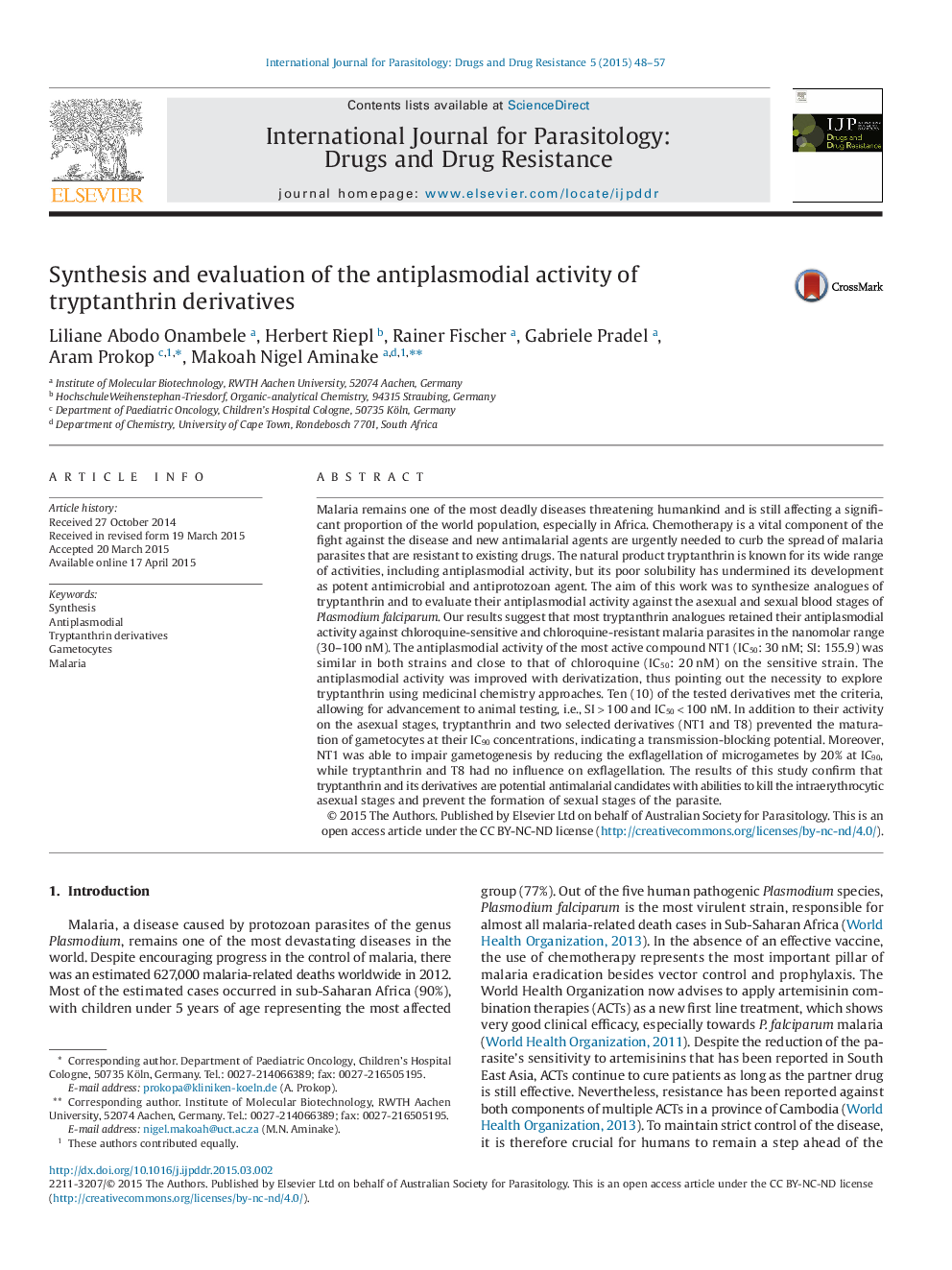| Article ID | Journal | Published Year | Pages | File Type |
|---|---|---|---|---|
| 2054595 | International Journal for Parasitology: Drugs and Drug Resistance | 2015 | 10 Pages |
•We report the synthesis of tryptanthrin derivatives.•We report the activity of tryptanthrin derivatives against Plasmodium falciparum.•We discuss the potential of tryptanthrin derivatives as multi-stage drugs.•We recommend the formulation and testing of tryptanthrins in in vivo studies.
Malaria remains one of the most deadly diseases threatening humankind and is still affecting a significant proportion of the world population, especially in Africa. Chemotherapy is a vital component of the fight against the disease and new antimalarial agents are urgently needed to curb the spread of malaria parasites that are resistant to existing drugs. The natural product tryptanthrin is known for its wide range of activities, including antiplasmodial activity, but its poor solubility has undermined its development as potent antimicrobial and antiprotozoan agent. The aim of this work was to synthesize analogues of tryptanthrin and to evaluate their antiplasmodial activity against the asexual and sexual blood stages of Plasmodium falciparum. Our results suggest that most tryptanthrin analogues retained their antiplasmodial activity against chloroquine-sensitive and chloroquine-resistant malaria parasites in the nanomolar range (30–100 nM). The antiplasmodial activity of the most active compound NT1 (IC50: 30 nM; SI: 155.9) was similar in both strains and close to that of chloroquine (IC50: 20 nM) on the sensitive strain. The antiplasmodial activity was improved with derivatization, thus pointing out the necessity to explore tryptanthrin using medicinal chemistry approaches. Ten (10) of the tested derivatives met the criteria, allowing for advancement to animal testing, i.e., SI > 100 and IC50 < 100 nM. In addition to their activity on the asexual stages, tryptanthrin and two selected derivatives (NT1 and T8) prevented the maturation of gametocytes at their IC90 concentrations, indicating a transmission-blocking potential. Moreover, NT1 was able to impair gametogenesis by reducing the exflagellation of microgametes by 20% at IC90, while tryptanthrin and T8 had no influence on exflagellation. The results of this study confirm that tryptanthrin and its derivatives are potential antimalarial candidates with abilities to kill the intraerythrocytic asexual stages and prevent the formation of sexual stages of the parasite.
Graphical AbstractFigure optionsDownload full-size imageDownload as PowerPoint slide
